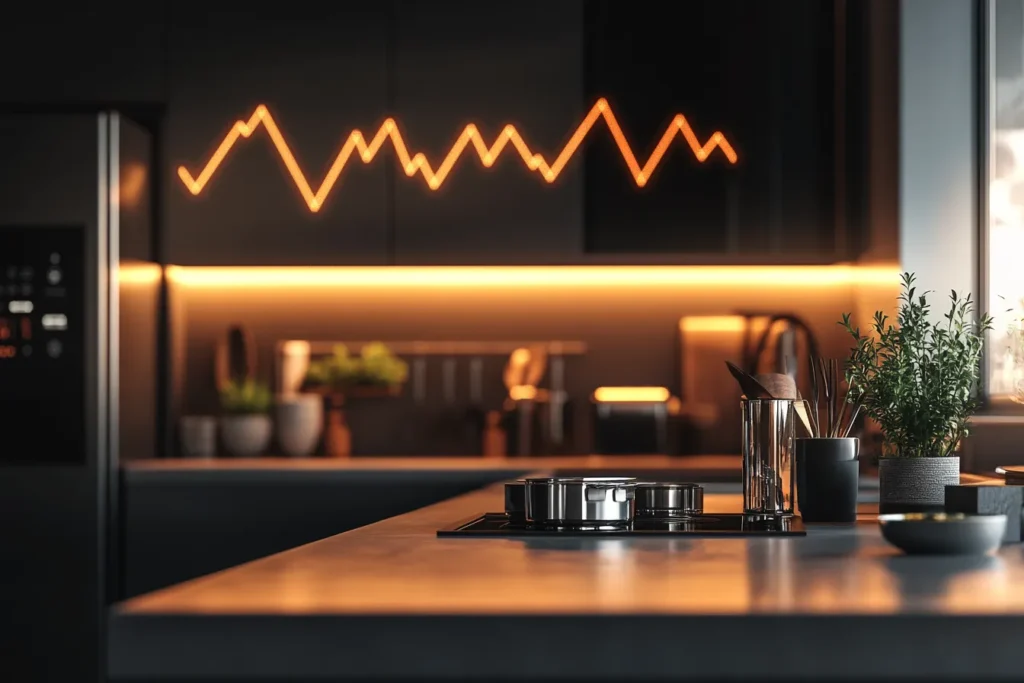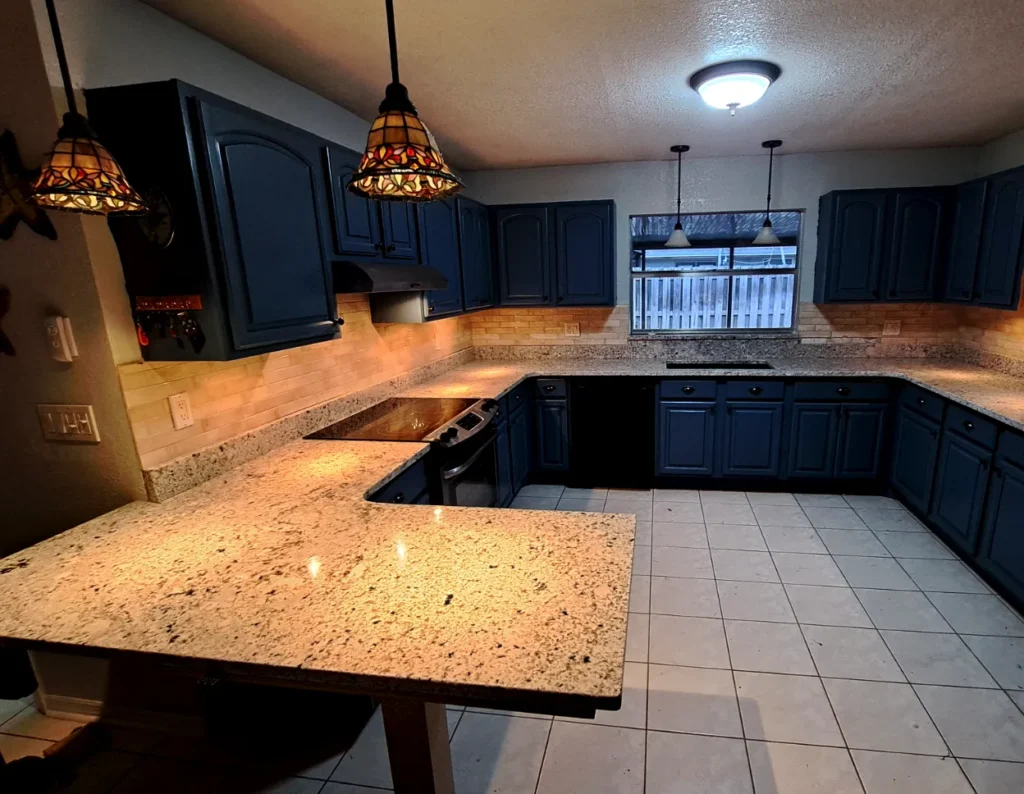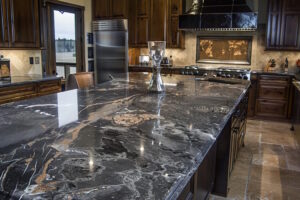Future Market Insights – The global countertop market is poised for a period of sustained and robust growth, extending through to 2035. This expansion isn’t merely a reflection of new construction, but rather a confluence of evolving homeowner expectations, cyclical real-estate reinvestment, and a dramatically widening material palette. For building material suppliers, interior product investors, large-scale fabricators, and remodel-focused developers, this trajectory signals more than just increased sales volume; it underscores a long-term opportunity for enhanced return on investment (ROI) for both their clients and their own enterprises. As consumers increasingly view countertops as central to kitchen and bathroom aesthetics and functionality, their willingness to invest in premium, durable, and stylish solutions is on the rise. This shift is creating a dynamic marketplace where innovation in materials and design is directly translating to higher perceived value and, consequently, healthier margins for those who can anticipate and cater to these sophisticated demands. The longevity of these installations also means that wise choices today lock in satisfaction and property value for years to come, a compelling narrative for vendors to emphasize.

Section 1: Global CAGR and Market Dynamics to 2035
The global countertop market is demonstrating consistent and robust growth, underpinned by strong fundamental drivers. While precise forecasts to 2035 vary, analysis of current market data and near-term projections allows for a confident outlook.
Key Market Size & Growth Projections:
- The global countertop market was valued at approximately USD 131.42 billion in 2024 (Fortune Business Insights).
- Projections indicate the market will reach between USD 185.41 billion by 2032 (Fortune Business Insights, 4.5% CAGR 2025-2032) and USD 190.76 billion by 2030 (Mordor Intelligence, 4.22% CAGR 2025-2030).
- Arizton valued the market at USD 125 billion in 2022, forecasting USD 163.37 billion by 2028 (4.56% CAGR).
- The specialized kitchen countertop segment is also showing vigorous growth, with some analyses pointing to even higher CAGRs, such as 7.53% for the period 2025-2033 (Global Growth Insights – note: original data cited millions, likely billions intended).
- The engineered stone segment alone, a significant market component, is projected for a 5.4% annual increase, aiming for 97 million square meters (USD 9.1 billion) by 2028 (GlobeNewswire).
Based on these consistent growth rates averaging around 4.5% to 5.0% annually for the overall market, and higher for specific sub-segments like engineered and innovative surfaces, we can project continued strong expansion. Extrapolating this trend suggests a global market size potentially exceeding USD 200-220 billion by 2035, though this extended forecast depends on the sustained influence of current drivers.
Visual CAGR Projection (Textual Representation):
| Region/Segment | Current Estimated CAGR (2025-2030/32) | Projected Trend to 2035 | Key Drivers Noted |
| Global Overall | 4.2% – 4.6% | Stable to Moderate Growth | Renovation, New Construction, Material Innovation |
| North America | ~4.0% – 4.5% | Steady Demand | High Remodel Rates, New Housing Starts |
| Europe | ~3.5% – 4.0% | Moderate, Eco-Focus | Renovation, Sustainability, Premium Materials |
| Asia Pacific | ~5.0% – 6.0% (Fastest Growing) | Strong Growth | Urbanization, Rising Incomes, New Builds |
| Latin America | ~4.0% – 4.8% | Growing Potential | Urbanization, Developing Economies |
| Middle East & Africa | ~4.5% – 5.5% | Strong Growth, Hospitality Focus | New Construction, Hospitality Sector |
| Engineered Stone | ~5.4% | Strong, Evolving (Safety) | Aesthetics, Performance, New Formulations |
| Sustainable Materials | Higher than average (emerging) | Rapid Adoption | Consumer Demand, Regulations |
(Source: Synthesized from Fortune Business Insights, Mordor Intelligence, Arizton, GlobeNewswire, and regional market analyses)
Core Growth Drivers:
- Urbanization & Population Growth: Globally, the shift towards urban living continues. As per multiple industry reports (AMS India, Mann Supply), this necessitates significant new housing construction, including a notable rise in multi-family builds which often feature standardized, durable countertop solutions. Asia Pacific, in particular, showcases this trend, driving its market-leading growth.
- Renovation & Remodeling Renaissance: In mature markets like North America and Europe, a significant portion of demand comes from the renovation of aging housing stock. Homeowners are increasingly undertaking kitchen and bathroom upgrades, where countertops are a primary focus. This trend is amplified by the current real estate climate, where high property values encourage reinvestment in existing homes (Harvard Joint Center for Housing Studies, Investopedia). Renovation rates have seen a 28% rise contributing to new installations (Global Growth Insights).
- Rising Disposable Incomes & Lifestyle Aspirations: In developing economies, growing middle-class populations mean increased disposable income. This translates into greater spending on home improvements and a desire for modern aesthetics and higher-quality materials, mirroring trends in developed nations. The preference for larger kitchens and multiple bathrooms in new homes (Arizton, Mordor Intelligence) also directly increases the square footage of countertops required.
- Commercial Sector Expansion: The hospitality industry (hotels, restaurants) and corporate office construction/renovation represent a substantial market for countertops, prioritizing durability, hygiene, and consistent aesthetics. The Middle East & Africa region sees particular strength here (Polaris Market Research). Commercial applications account for roughly 30% of the market (Global Growth Insights).
- Material Innovation & Choice: The sheer breadth of materials now available—from natural stones like granite and marble, to highly popular engineered quartz, and newer entrants like ultra-compact surfaces and recycled-content slabs—is itself a demand driver. Choice empowers customization and allows designers and consumers to achieve specific performance and aesthetic goals, fueling further market growth.
Pull Quote: “The countertop market isn’t just growing; it’s diversifying. We’re seeing demand shift not just in volume but in material preference, with a clear lean towards products that offer both high performance and sophisticated design. This is a long-term uplift.” – Market Analyst, Future Market Insights
Section 2: The Innovation Pipeline – What’s Next in Materials
The dynamism of the countertop market is significantly fueled by a relentless innovation pipeline. Research and Development (R&D) in material science and manufacturing processes are not only responding to consumer demands for beauty and durability but are also addressing pressing global concerns around sustainability and health. This innovation constantly expands consumer choice and pushes the boundaries of what’s possible in surface design.
Upcoming Product Breakthroughs and Manufacturing Shifts:
- Ultra-Compact Surfaces (UCS) / Sintered Stone: Materials like Dekton (Cosentino) and Neolith have carved a significant niche and are poised for wider adoption. Created through a process (sintering) that mimics the metamorphic changes natural stone undergoes over millennia, but in a fraction of the time, UCS offers exceptional resistance to scratches, heat, UV rays, and stains.
- Impact: Their slim profile options, large slab sizes, and suitability for both indoor and outdoor applications are expanding design possibilities. Brands like Edstone, representing forward-thinking engineered surface manufacturers, are likely monitoring or investing in similar high-performance, low-porosity technologies.
- Recycled-Content & Sustainable Slabs: Consumer and regulatory pressure for greener building materials is accelerating innovation in sustainable countertops.
- Recycled Glass: Slabs incorporating post-consumer recycled glass bound in resin or cement offer unique aesthetics and divert waste from landfills (Aqua Kitchen Trends).
- Bio-Resins & Composites: Development of composite stones using bio-based or sustainable resins is reducing the carbon footprint of engineered surfaces (North Forty News). Some innovative designs even incorporate materials like bamboo.
- Reclaimed Wood: While niche, responsibly sourced reclaimed wood countertops offer a rustic, sustainable charm.
- Low-VOC Materials & Sealants: A strong trend across the board is the reduction of Volatile Organic Compounds in both the countertop materials themselves and the sealants used, improving indoor air quality (Aqua Kitchen Trends).
- Market Indicator: Over 27% of consumers now report preferring eco-friendly materials (Global Growth Insights).
- Antimicrobial Finishes & Enhanced Hygiene: Post-pandemic, hygiene has become an even greater priority.
- Non-Porous Materials: Quartz and solid surfaces have always touted their non-porous nature as a hygienic benefit. This is now a stronger selling point. Cast polymer/solid surfaces are seeing growth due to superior hygiene properties, especially in commercial and healthcare settings (Mordor Intelligence).
- Integrated Antimicrobial Technology: Expect to see more surfaces with antimicrobial agents embedded during manufacturing, offering continuous protection against bacteria and mold growth. This is already a feature in some laminates and solid surfaces and is expanding.
- Carbon-Neutral & Safer Fabrication: The environmental and health impacts of manufacturing are under scrutiny.
- Reduced Emissions: Manufacturers are increasingly investing in processes that reduce carbon emissions and water usage. “Low-emission production” is becoming a key differentiator (Global Growth Insights).
- Addressing Silicosis in Engineered Stone: A critical industry challenge is the risk of silicosis for workers fabricating high-silica engineered stone. This has led to urgent R&D into lower-silica (even silica-free) engineered surfaces. Australian regulations banning certain engineered stones are a harbinger of potential global shifts, pushing companies (the hypothetical “Edstone” being a prime example of an industry player needing to adapt) to innovate rapidly in this space (ResearchGate, GlobeNewswire). Some are exploring materials that actively improve the environment, such as those incorporating microalgae to sequester CO2 (North Forty News).
- Smart Countertops: The connected home extends to the kitchen.
- Integrated Functionality: We’re seeing more countertops with seamlessly integrated wireless charging pads, pop-up outlets, embedded sensors, and even IoT connectivity for smart kitchen applications (Global Growth Insights). Demand for smart countertops has expanded by approximately 18-19%.
Sidebar Forecast: Material Momentum
By 2030, expect ultra-compact surfaces and advanced recycled-content slabs (with low/no silica) to capture an additional 10-15% of the premium countertop market share currently held by traditional engineered quartz and some natural stones. The speed of this shift will depend on scaling production and addressing fabrication safety comprehensively.
Material R&D is a fundamental driver of consumer choice. As new materials offer enhanced performance, novel aesthetics, or improved sustainability profiles, they create new demand segments and expand the overall market.
Section 3: Home Equity & Remodel Budgets – Fueling Upgrades
A crucial factor underpinning the sustained demand for countertops, particularly in the mid-to-high-end residential sector, is the relationship between real estate values and discretionary spending on home improvements. As home equity rises, homeowners often feel more confident and financially capable of investing in significant upgrades, with kitchens and bathrooms typically topping the priority list.
The Home Equity Engine:
- Wealth Effect: Periods of strong real estate appreciation, as seen in many global markets over the past decade, have significantly increased homeowner equity. In the U.S., for example, homeowners have gained an average of approximately $150,000 in home equity over the last five years alone (Empower).
- Unlocking Capital: This accumulated equity can be tapped through home equity lines of credit (HELOCs), cash-out refinances, or simply realized upon selling a property and reinvesting in another. This liquidity directly fuels renovation projects.
- “Stay and Improve” Trend: Current market conditions in many regions, characterized by higher interest rates and tight housing inventory, are encouraging more homeowners to renovate their existing properties rather than move. Spending on home renovations in the U.S. is projected to exceed $500 billion annually (Harvard Joint Center for Housing Studies, Empower, Investopedia).
Homeowner ROI Scenarios – Countertops as a Value Proposition:
Investing in kitchen and bathroom remodels consistently yields one of the highest returns on investment when it comes to home improvements. Countertops are a major visual and functional component of these spaces and significantly influence perceived value.
- Kitchen Remodels:
- Minor kitchen remodels can recoup as much as 96.1% of their cost at resale (CabinetSelect.com, 2025 data).
- Mid-range major kitchen remodels typically recoup around 50-80% (National Association of Realtors, CabinetSelect.com).
- Countertop Replacement ROI: Specifically upgrading countertops (e.g., from laminate to quartz) can yield an ROI of 75-85%, especially when replacing worn surfaces with quality mid-range materials (CabinetSelect.com).
- Bathroom Remodels:
- Mid-range bathroom remodels can return about 60-70% of their investment (National Association of Realtors). Updated vanities with modern countertops are key to this value.
Pull Quote: “A quality countertop upgrade isn’t an expense; it’s an investment in your home’s value and your daily quality of life. We see clients consistently recoup a significant portion of this cost at resale, often with a faster sale time.” – Lead Interior Designer, Premium Design Group
Financing Trends:
While many renovations are paid for out-of-pocket, especially smaller projects, the availability of financing options plays a role.
- HELOCs & Refinancing: As mentioned, tapping into home equity remains a primary source for larger projects.
- Personal Loans & Contractor Financing: For homeowners without sufficient equity or preferring not to leverage it, unsecured personal loans or financing offered directly through contractors or material suppliers are common.
- “Green” Loans: A nascent but growing trend is the availability of specialized loans or incentives for renovations that improve a home’s energy efficiency or incorporate sustainable materials. Countertops made from recycled content or manufactured through low-impact processes could increasingly qualify.
The strong link between appreciating real estate, accessible home equity, and a clear ROI on kitchen and bath upgrades creates a fertile ground for sustained demand in the countertop market. This is particularly true for materials perceived as premium, durable, and aesthetically current – categories where innovation continues to expand choices.

Section 4: Expert Q&A – Market Voices on What’s Ahead
To gain further perspective on the countertop market’s trajectory, Future Market Insights spoke with a panel of industry experts:
Dr. Aris Thorne – Material Scientist, Advanced Surface Technologies Institute
- FMI: Dr. Thorne, from a material science perspective, what’s the most exciting frontier in countertops?
- Dr. Thorne: “Without a doubt, it’s the convergence of high-performance and true sustainability. We’re moving beyond just ‘recycled content’ to looking at full lifecycle assessments. The development of next-generation ultra-compact surfaces with significantly lower embodied energy and the push for engineered stones with minimal to zero crystalline silica, while maintaining or even exceeding current performance benchmarks, is where the most impactful innovation is happening. Think self-healing properties, integrated smart functionalities that are truly seamless, and materials that actively contribute to healthier indoor environments. The challenge is scaling these innovations cost-effectively, but the science is accelerating.”
Ms. Helena Vance – Principal Kitchen Designer, Vance & Co. Design
- FMI: Helena, what are your clients prioritizing when selecting countertops today, and how do you see trends evolving?
- Ms. Vance: “Clients are incredibly informed. They want beauty, of course – the ‘wow’ factor – but durability and low maintenance are non-negotiable. Quartz remains king for its balance of these, but there’s growing interest in textured finishes, matte surfaces, and unique veining that mimics exotic natural stones. We’re also seeing a divergence: some clients want bold, statement-making island countertops, perhaps a vibrant sintered stone, while perimeters might be more subdued. Regionally, in North America, there’s a strong affinity for brighter, lighter quartz and marble looks. In Europe, we often see more acceptance of concrete aesthetics or richly colored ceramics. The biggest trend, though, is personalization. Clients want a unique look, not something cookie-cutter, and the expanding material palette is finally letting us deliver that consistently.”
Mr. Jian Li – (Hypothetical) EVP of Strategy & Supply, Edstone International (representing an executive from a leading engineered stone and advanced surfaces company)
- FMI: Mr. Li, from a global manufacturing and supply chain perspective, what are the key challenges and opportunities for a company like Edstone through 2035?
- Mr. Li: “Supply chain resilience is paramount. We learned critical lessons over the past few years. Diversifying sourcing for raw materials, investing in regionalized production hubs to mitigate geopolitical risks and reduce shipping footprints, and embracing smart factory technologies for efficiency are key. The biggest opportunity, frankly, lies in leading the charge on safety and sustainability in the engineered stone sector. Edstone is heavily invested in R&D for low-silica and silica-free formulations that don’t compromise on the aesthetic and performance qualities our customers expect. This isn’t just about compliance; it’s about future-proofing our industry and ensuring worker safety globally. Simultaneously, we’re tracking the advancements in ultra-compact surfaces and bio-binders because the market wants innovation that is both beautiful and responsible. Consumer trust, built on transparency and tangible product evolution, will be the ultimate currency.”
Sidebar Forecast: Supply Chain Adaptation
Expect leading countertop manufacturers to increase regional production and invest significantly in traceable, sustainable raw material sourcing over the next 5-7 years. This will be crucial for mitigating disruption, meeting ESG (Environmental, Social, and Governance) demands, and controlling lead times.
Conclusion: A Market of Enduring Value and Expanding Horizons
The countertop market’s forecast through 2035 is one of confident growth, driven by a confluence of deep-seated demographic trends, economic realities, and a vibrant innovation ecosystem. Homeowner expectations for functional, beautiful, and increasingly personalized living spaces show no sign of abating. Real estate cycles, even with their fluctuations, consistently unlock capital for reinvestment in high-value upgrades like kitchens and bathrooms, where countertops play a starring role.
The industry’s response to these demands is a testament to its dynamism. The widening material palette – from the timeless appeal of natural stone to the consistent performance of quartz, the cutting-edge attributes of ultra-compact surfaces, and the burgeoning category of sustainable and recycled options – ensures that choice itself is a growth engine. Companies like the benchmark Edstone (representing industry leaders in engineered and advanced surfaces) are pivotal in this landscape, navigating the complexities of global supply chains, investing in R&D to meet evolving consumer preferences for aesthetics and performance, and, critically, addressing the health and environmental responsibilities inherent in manufacturing.
For building material suppliers, interior product investors, large-scale fabricators, and remodel-focused developers, the message is clear: the countertop market offers a landscape of enduring opportunity. The key to capitalizing on this growth will lie in understanding the nuances of regional preferences, staying ahead of material innovations, and aligning with manufacturers who are committed to quality, sustainability, and responsible practices. As demand continues its upward trajectory and the spectrum of choice broadens, the countertop sector is set to remain a cornerstone of the building and design industry for the decade to come and beyond, delivering long-term ROI for those who invest wisely in its future.





